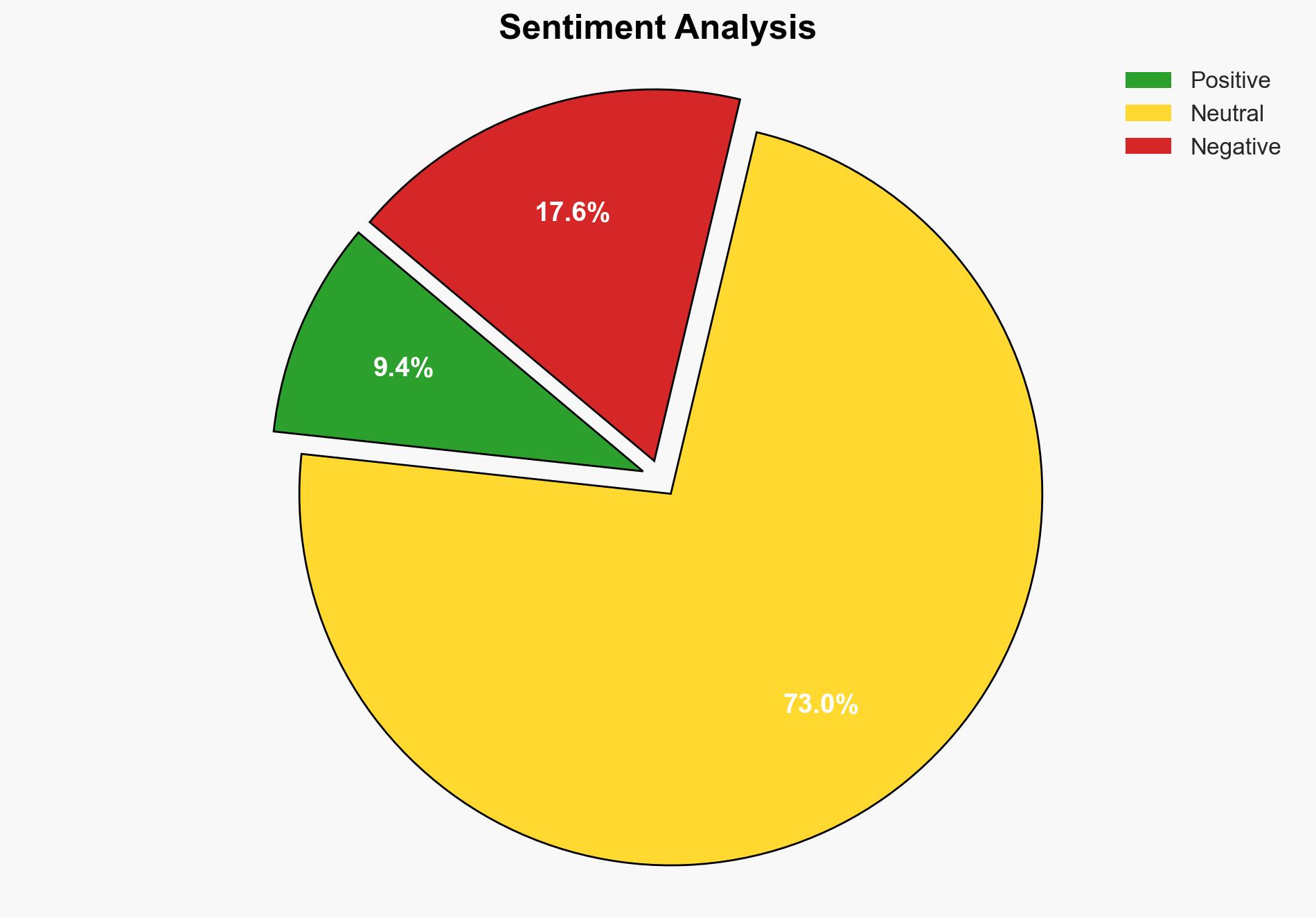Polish PM Tusk Says Railway Explosion ‘Act Of Sabotage’ – Globalsecurity.org
Published on: 2025-11-18
AI-powered OSINT brief from verified open sources. Automated NLP signal extraction with human verification. See our Methodology and Why WorldWideWatchers.
Intelligence Report:
1. BLUF (Bottom Line Up Front)
The most supported hypothesis is that the railway explosion in Poland was an act of sabotage orchestrated by or on behalf of a foreign power, likely Russia, as part of a broader hybrid warfare strategy. Confidence Level: Moderate. Recommended action includes enhancing security measures, increasing intelligence sharing with allies, and preparing for potential retaliatory or escalatory actions.
2. Competing Hypotheses
Hypothesis 1: The explosion was an act of sabotage carried out by a foreign power, likely Russia, to destabilize Poland and disrupt military logistics to Ukraine.
Hypothesis 2: The explosion was a domestic act of sabotage by non-state actors or disgruntled individuals within Poland, with no direct foreign involvement.
Hypothesis 1 is more likely due to the historical context of Russian hybrid warfare tactics, previous accusations of Russian espionage in Poland, and the strategic significance of the railway line for military logistics to Ukraine.
3. Key Assumptions and Red Flags
Assumptions include the reliability of Polish intelligence and the historical pattern of Russian hybrid tactics. A red flag is the potential for confirmation bias, given Poland’s tense relations with Russia. Deception indicators include Russia’s routine denial of involvement in similar incidents, which could be a strategic obfuscation tactic.
4. Implications and Strategic Risks
The incident could escalate tensions between NATO and Russia, potentially leading to increased military readiness or cyber retaliations. Economically, it may disrupt supply chains and increase security costs. Informationally, it could fuel propaganda and misinformation campaigns, undermining public trust in government security capabilities.
5. Recommendations and Outlook
- Enhance surveillance and security measures on critical infrastructure.
- Strengthen intelligence-sharing frameworks with NATO allies.
- Prepare for potential cyber-attacks as a retaliatory measure.
- Best-case scenario: Increased security measures deter further incidents, and diplomatic channels de-escalate tensions.
- Worst-case scenario: Escalation leads to broader regional conflict or significant cyber-attacks on critical infrastructure.
- Most-likely scenario: Continued low-level hybrid warfare tactics by Russia, with sporadic incidents of sabotage or cyber-attacks.
6. Key Individuals and Entities
Donald Tusk (Polish Prime Minister), Władysław Kosiniak-Kamysz (Polish Defense Minister), Russian government entities.
7. Thematic Tags
Structured Analytic Techniques Applied
- Cognitive Bias Stress Test: Expose and correct potential biases in assessments through red-teaming and structured challenge.
- Bayesian Scenario Modeling: Use probabilistic forecasting for conflict trajectories or escalation likelihood.
- Network Influence Mapping: Map influence relationships to assess actor impact.
Explore more:
National Security Threats Briefs ·
Daily Summary ·
Support us





